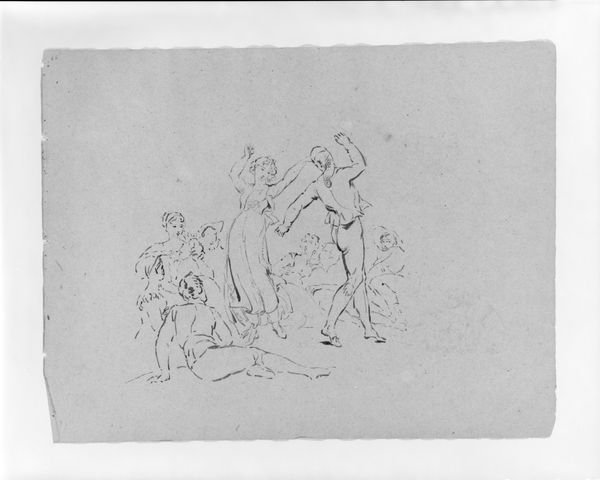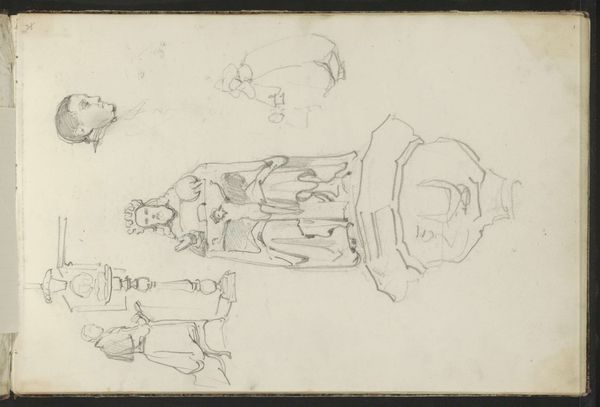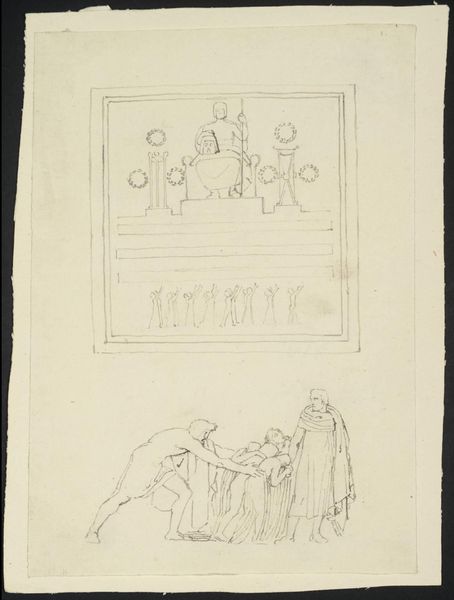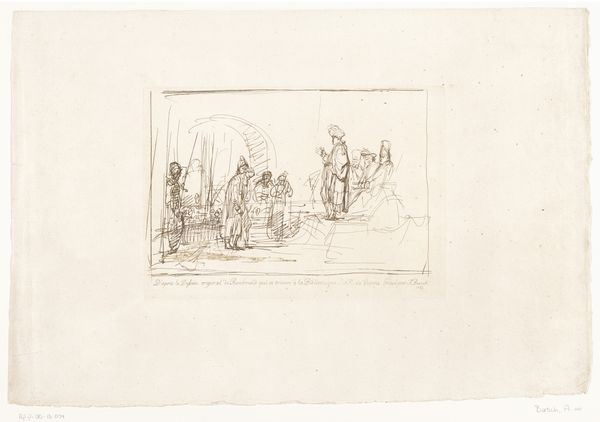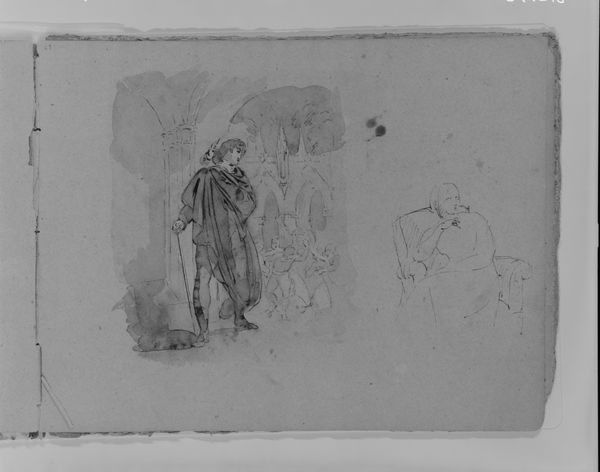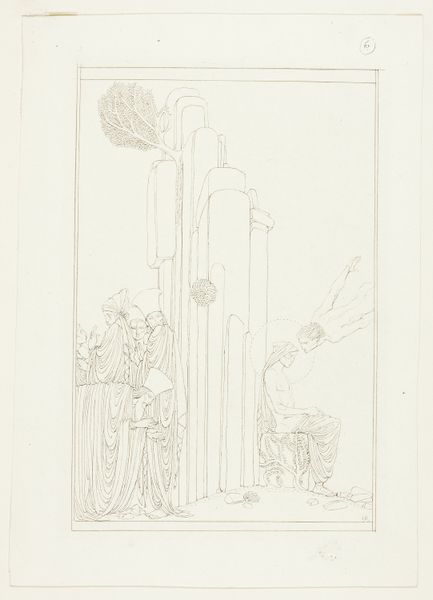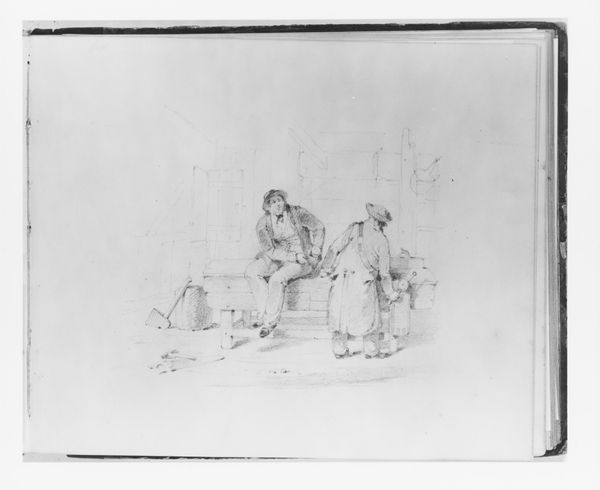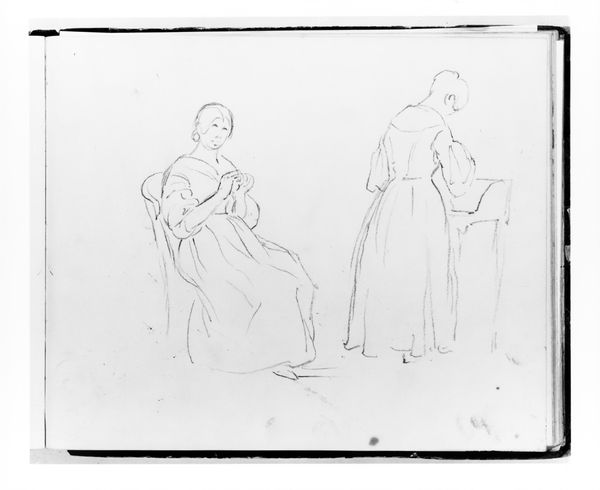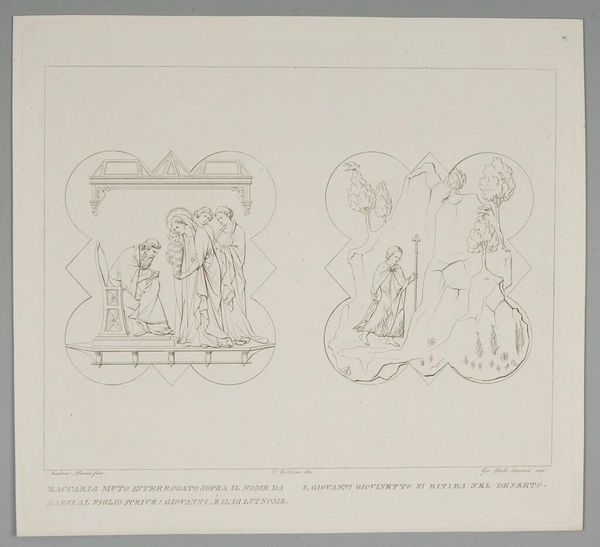
Athena;Two Classical Figures (Possibly Venus) (from Sketchbook) 1857 - 1860
0:00
0:00
drawing, paper, pencil
#
portrait
#
drawing
#
pencil sketch
#
greek-and-roman-art
#
figuration
#
paper
#
ancient-mediterranean
#
pencil
Dimensions: 8 1/16 × 11 in. (20.5 × 27.9 cm)
Copyright: Public Domain
Curator: John Quincy Adams Ward created this pencil sketch, "Athena; Two Classical Figures (Possibly Venus)," sometime between 1857 and 1860. Editor: It’s so raw and ghostly, like a memory glimpsed through time. The starkness of the pencil on paper throws the classical subject matter into sharp relief. You feel the artist’s hand directly. Curator: Right! Look at the paper itself. It feels like we're peering into his studio, witnessing his process. It grounds these idealized figures in the everyday reality of artistic labor. Did he perhaps sketch it quickly during a break when modeling a marble statue in his workshop? Editor: Yes, especially with these ancient muses reduced to materials worked with through repetitive movements of production and labor, contrasting traditional boundaries of art and craft. It's a peek behind the curtain of the heroic narratives. I also appreciate seeing the subtle snake on Athena’s shield rendered so plainly. It undercuts any overblown drama or heroic pretense. Curator: The presence of the figures hints at Adams Ward’s interest in antiquity. And to think, the sketches appear within his notebook along with careful details for other classical sculptures, but they may instead suggest personal sketches, where they take on a quiet significance detached from public commissions. Editor: I agree. And think of the materiality of ancient sculptures when compared to pencil; we must discuss Adams’ fascination with stone carving when speaking about drawing these pencil works; consider labor itself. Curator: That's beautifully said, and it makes you wonder about what those fleeting sketches meant to him—the artist? It offers insight into what it meant for them to sketch Athena and other figures of Greek history so quietly in his free time! What could these drawings reveal about personal fascination with material creation during 19th century America? Editor: Ultimately, I can no longer consider history after having thought through Adams’ fascination with form, history, creation, and especially labor. Curator: What a profound idea, a pencil that reveals the weight and substance of labor.
Comments
No comments
Be the first to comment and join the conversation on the ultimate creative platform.

